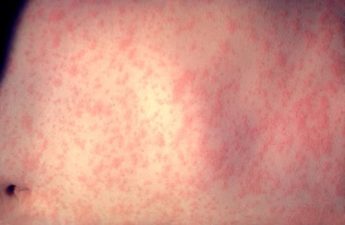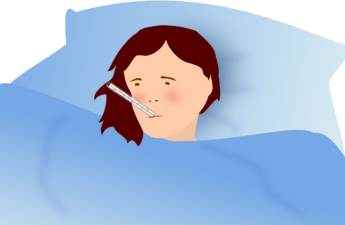Public Health Insider, Public Health – Seattle & King County

Dr. Jeff Duchin, Health Officer for Public Health — Seattle & King County recently interviewed with ProPublica and The Seattle Times to discuss his and the department’s thinking related to the timing of Public Health recommendations to avoid and subsequently prohibit large public gatherings, and in particular in not prohibiting the Sounders match on March 7th.
The following is an overview of information Dr. Duchin shared in his conversation and through e-mail.
Early response and initial outbreak
Starting in late January, when the first United States COVID-19 case was recognized in Snohomish County, and with relatively few recognized COVID-19 cases, our public health response was based on a resource intensive “containment” strategy.
It involved extensive investigations of suspected and confirmed cases, isolating ill people and identifying and following up with their close contacts to arrange isolation or quarantine as needed in an effort to interrupt transmission from person to person.
On February 29th, King County announced an outbreak of COVID-19 at a skilled nursing facility, Life Care Center of Kirkland. This was the first recognized COVID-19 outbreak in the United States.
Through our investigations in the next few days, it became clear that, in addition to the Life Care outbreak, we were seeing cases in the community that were not linked to previously known cases.
This suggested that unrecognized community transmission was occurring despite our extensive case and contact investigations. It was unrecognized, at least in part, due to the limited testing capacity locally and nationally.
Considerations on when to start closures
For this reason, Dr. Duchin determined that over the coming days the public health response strategy needed to transition from containment and individual case and contact management to community-based actions (also known as mitigation) to more effectively decrease the spread of COVID-19.
Mitigation starts with personal steps such as handwashing, avoiding others who are ill, and no face-touching. It also includes broader, community-based social distancing measures such as staying home as much as possible, school and non-essential business closures, and postponing large events and gatherings.
Community mitigation and social distancing measures are not expected to prevent all cases of COVID-19. Their aim is to decrease infections enough to delay the onset and decrease the peak of the outbreak, protecting hospitals from becoming overwhelmed and unable to manage the surge of seriously ill people in need of lifesaving critical care.
However, social distancing measures also have significant negative social and economic impacts. They had not been used in the United States in over 100 years. Also, there were no national guidelines or criteria for exactly when to take the more disruptive and costly actions such as prohibiting gatherings and closing schools.
The best timing for enacting these social distancing measures was highly uncertain. Starting too early could cause unnecessary economic and social consequences, while too late could make them less effective and lead to preventable deaths if the healthcare system is overwhelmed. Also, we preferred to start with voluntary measures to see how well they are adopted and working before moving to mandatory actions.
Disease modeling suggested that the best time to take action is at some point before or not long after the number of new cases started to increase rapidly, but well before the peak in cases.
Because of limited testing in the community, we didn’t have a good sense of where exactly we might be on the disease curve in relation to a future peak.
Case reports from the first week in March showed that the number of cases was increasing slowly but steadily, and began to increase more rapidly in the second week of March.
For all these reasons, we’ve taken a step-wise approach on public health community mitigation actions, escalating them based on the best information available at the time.
At each step of the process, we’ve worked closely with our regional and state partners and elected officials, so that any changes could be made in a coordinated way and in as orderly a process as possible, given the massive impacts on the affected communities.
Initial public recommendations, then closures
On March 4th, working with our King County Executive, we took the first step by issuing public recommendations around social distancing and personal measures, giving people specific information to protect their health.
Our initial emphasis was on protecting people at greatest risk — people 60 and over, and those with underlying health conditions — based on what we knew from China and preliminary information provided by the Centers for Disease Control and Prevention (CDC).
We also asked event organizers to consider postponing of events or gatherings, but it wasn’t an order to close at that point. This approach was also consistent with state Department of Health guidance. Many organizations voluntarily suspended their events based on our recommendations.
By March 6th, seeing a steady increase in new cases, Dr. Duchin anticipated that the rapid growth phase in new cases was not far off and saw the need to prepare to move to the next step, indicating in emails that he wanted to move planning forward to close large events.
After consulting with local, state and national health officials on a March 7th call, we shared our recommendations with our local and state elected officials, who met the next day and agreed that it was the right time to move to event closures. Further planning ensued with the state, and on March 11th, we issued those closure orders locally and statewide.
Additional community mitigation measures were enacted in subsequent days and weeks. Schools were closed statewide on March 13th. On March 16th, local and state closure orders were expanded. A statewide stay-at-home order was issued, including closure of all non-essential businesses, on March 23rd.
Sounders match on March 7th
Based on the number of cases in the community at that time, we believed that holding the Sounders match on March 7th did not present a significant threat and would not change the overall course of the outbreak, and therefore didn’t warrant an immediate closure order before the plan to close all large gatherings the following week.
Attendance at the match on March 7th was less than normal, presumably because of our recommendations issued on March 4th for people at highest risk to avoid public gatherings, and our general warnings that the risk of infection in the community was increasing.
Looking back and ahead
Looking back, we think the decisions made were appropriate. Based on the latest evidence we have now, disease transmission in King County has been significantly slowed, the peak in COVID-19 hospitalizations was below what was feared, and our healthcare system has been able to keep up with the rate of new infections, suggesting that the steps we took were timed effectively.
Even so, the COVID-19 outbreak continues to threaten our community and nation and we all have a long way to go before we let our guard down. It’s critical that we continue with our effective social distancing measures to further reduce new cases.
Before we lift current stay-at-home orders and event closures, we will need alternative strategies such as widespread testing, adequate healthcare system surge capacity and personal protective equipment (PPE), and increased resources for isolation of cases and contact tracing to manage ongoing infections — all in order to prevent a massive resurgence of cases that could still overwhelm our health care system.
ProPublica and The Seattle Times also asked about the Seattle Dragons XFL game on February 22nd at CenturyLink. A worker at the game later tested positive for the virus that causes COVID-19, and they wanted to know our thinking about communicating about that case. Here is what was shared:
We learned of this positive case on March 2nd. Our communicable disease team conducted an investigation, and determined on March 3rd that the person was an employee at CenturyLink, and potentially contagious at the February 22nd game. CenturyLink operators were notified shortly thereafter.
Our investigation found four staff members who had close contact and were at increased risk. (Close contact is defined as face-to-face contact for 10 minutes.) These people were contacted directly, so a broader message wasn’t warranted from a public health standpoint, since there was nothing more anyone else needed to do.
None of the close contacts tested positive in subsequent weeks after the exposure. We treated cases at other large businesses such as Amazon and Facebook the same way, and didn’t issue public notices based on exposures in their facilities if all the close contacts could also be contacted directly.
We spoke with the XFL to address their questions about the case and investigation, and they ultimately decided they wanted to do a broader communication. They gave us an opportunity to review their statement, which we did and offered language which they seemed to accept.
Our concern was raised when the XFL sent out a different, brief statement on March 4th that made no mention of the investigation findings, and that could be misinterpreted as the case posing more than minimal risk to attendees, which wasn’t true based on our investigation and CDC guidance. We issued our own public notice as part of a media release on March 5th to set the record straight.


